Abstract
Serological evidence of infection with influenza A and B viruses was sought during three successive winters. Paired sera from 1595 pregnant women were studied and 79 infections occurred in 77 women (4.8%). A further 77 women who had no serological evidence of recent influenza infection were selected from the study population to serve as a control group. Cases and controls were comparable with respect to age, race, marital status, and number of previous pregnancies. Their offspring had virtually identical mean birth weights, skull circumferences, lengths, and incidences of neonatal jaundice. Although all the infections occurred in either the second or the third trimesters of pregnancy, the cases delivered more babies with congenital abnormalities than did the controls. The possibility was considered that the presence of an abnormal fetus made these women more susceptible to influenza infection. Unexpectedly, the women experiencing influenza infection during pregnancy delivered an excess of male babies, and an excess of females was born to the controls. Although this difference was statistically highly significant (P < 0.01), a biological explanation for the results was not readily apparent and it is suggested that future studies of influenza during pregnancy should particularly look for evidence of an altered sex ratio.
Full text
PDF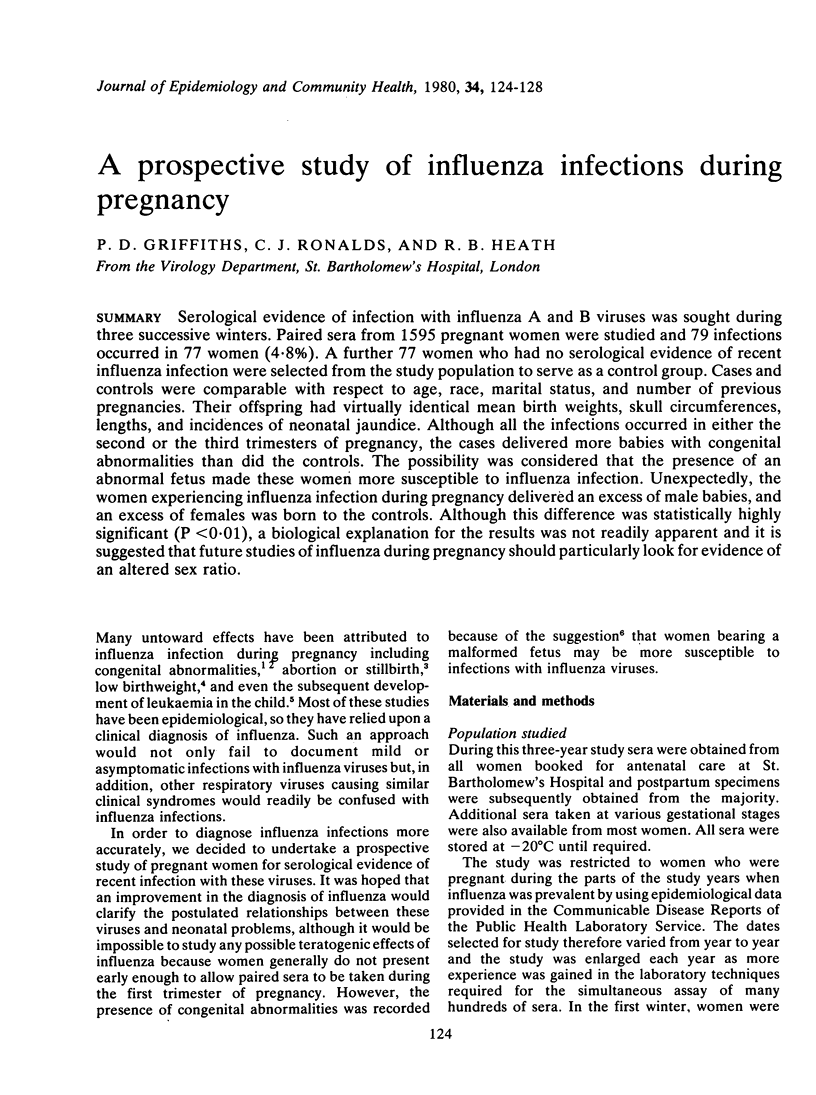
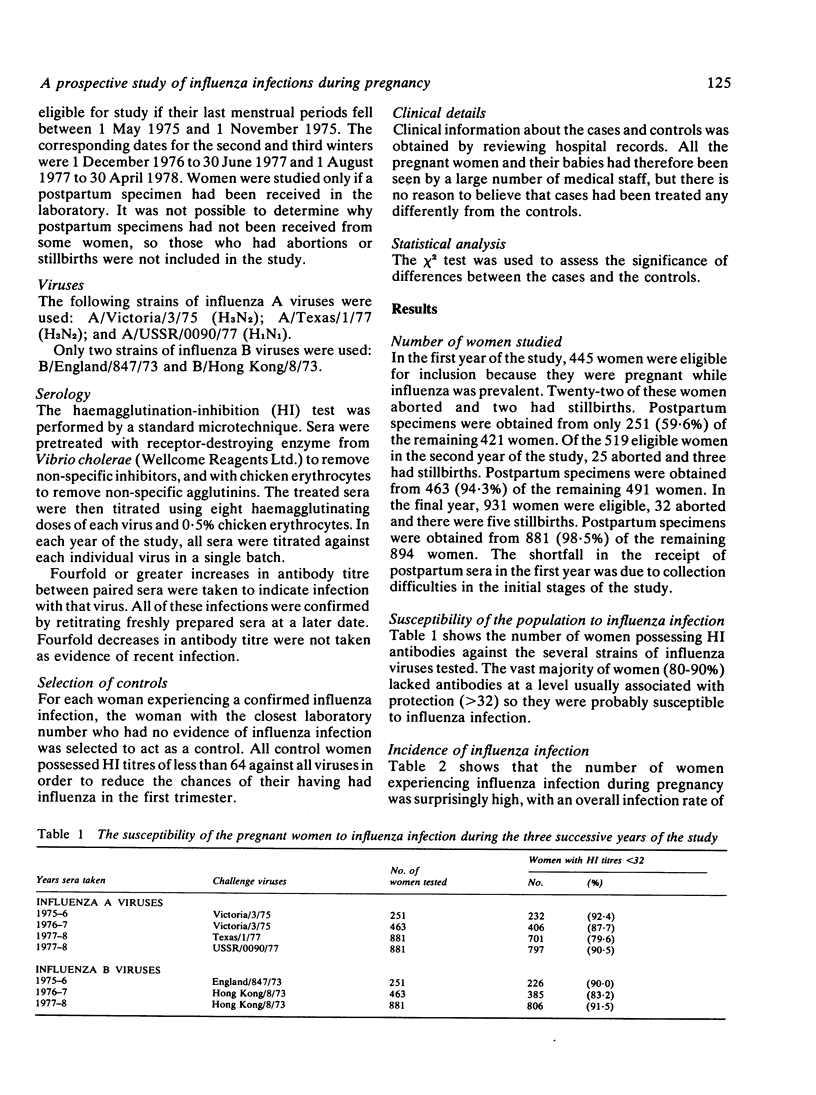
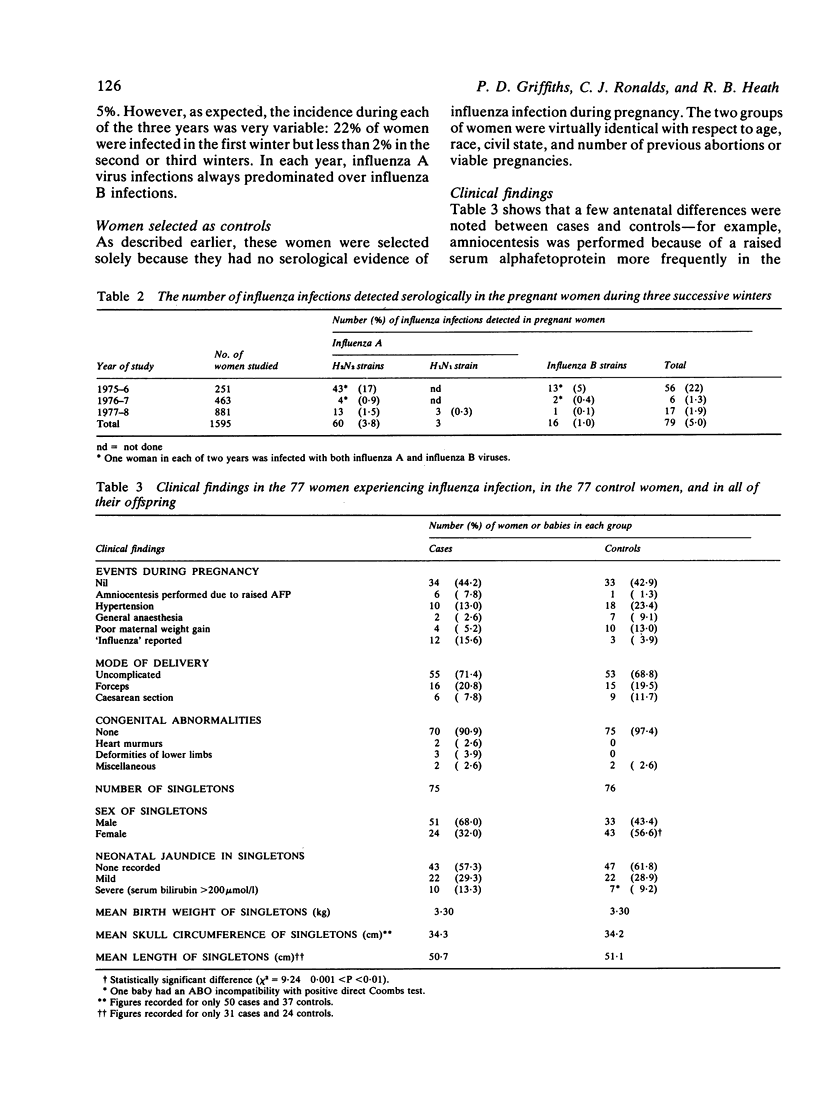
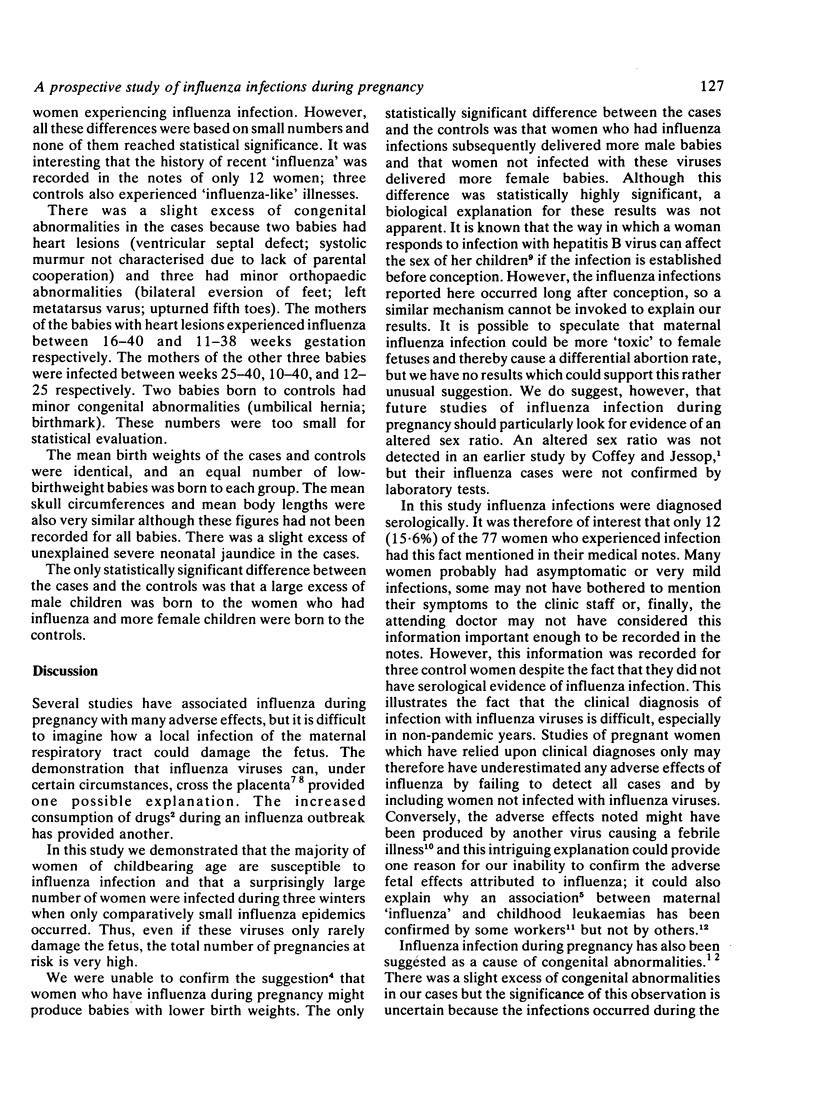
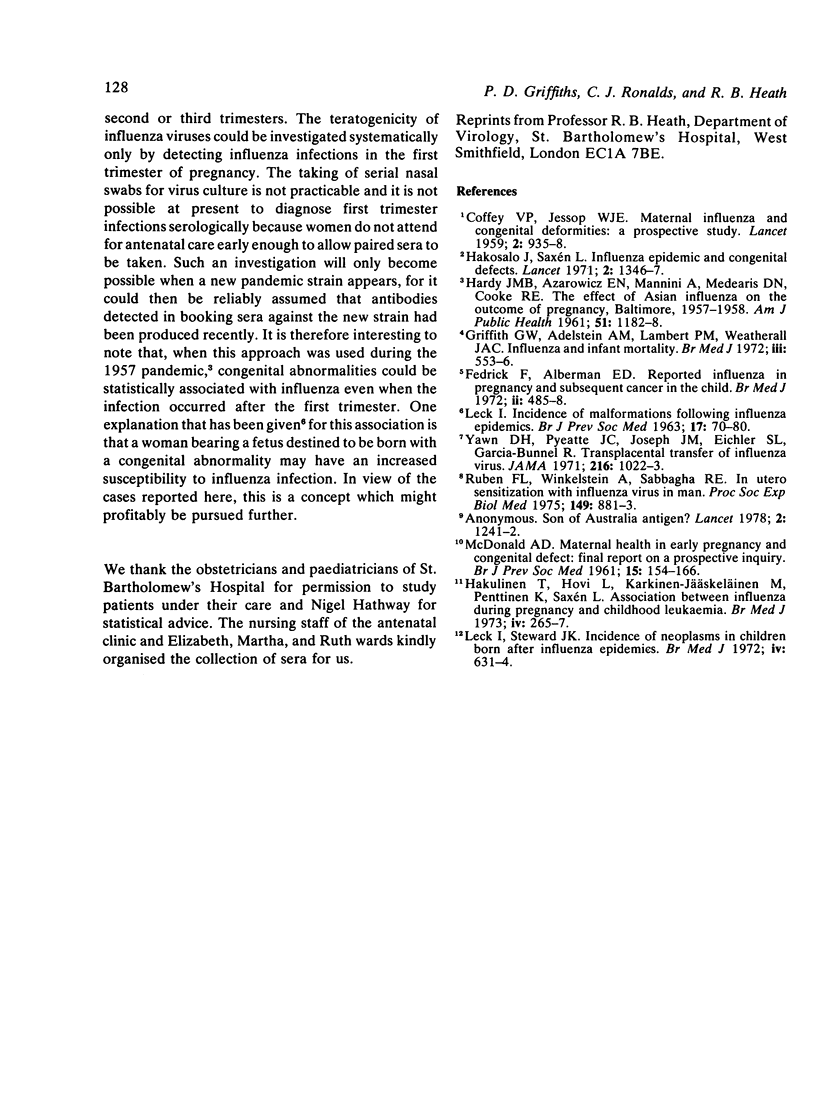
Selected References
These references are in PubMed. This may not be the complete list of references from this article.
- COFFEY V. P., JESSOP W. J. Maternal influenza and congenital deformities: a prospective study. Lancet. 1959 Nov 28;2(7109):935–938. doi: 10.1016/s0140-6736(59)91585-5. [DOI] [PubMed] [Google Scholar]
- Fedrick J., Alberman E. D. Reported influenza in pregnancy and subsequent cancer in the child. Br Med J. 1972 May 27;2(5812):485–488. doi: 10.1136/bmj.2.5812.485. [DOI] [PMC free article] [PubMed] [Google Scholar]
- Griffith G. W., Adelstein A. M., Lambert P. M., Weatherall J. A. Influenza and infant mortality. Br Med J. 1972 Sep 2;3(5826):553–556. doi: 10.1136/bmj.3.5826.553. [DOI] [PMC free article] [PubMed] [Google Scholar]
- HARDY J. M., AZAROWICZ E. N., MANNINI A., MEDEARIS D. N., Jr, COOKE R. E. The effect of Asian influenza on the outcome of pregnancy, Baltimore, 1957-1958. Am J Public Health Nations Health. 1961 Aug;51:1182–1188. doi: 10.2105/ajph.51.8.1182. [DOI] [PMC free article] [PubMed] [Google Scholar]
- Hakosalo J., Saxén L. Influenza epidemic and congenital defects. Lancet. 1971 Dec 18;2(7738):1346–1347. doi: 10.1016/s0140-6736(71)92362-2. [DOI] [PubMed] [Google Scholar]
- Hakulinen T., Hovi L., Karkinen-Jäskeläinen, Penttinen K., Saxén L. Association between influenza during pregnancy and childhood leukaemia. Br Med J. 1973 Nov 3;4(5887):265–267. doi: 10.1136/bmj.4.5887.265. [DOI] [PMC free article] [PubMed] [Google Scholar]
- LECK I. Incidence of malformations following influenza epidemics. Br J Prev Soc Med. 1963 Apr;17:70–80. doi: 10.1136/jech.17.2.70. [DOI] [PMC free article] [PubMed] [Google Scholar]
- Leck I., Steward J. K. Incidence of neoplasms in children born after influenza epidemics. Br Med J. 1972 Dec 16;4(5841):631–634. doi: 10.1136/bmj.4.5841.631. [DOI] [PMC free article] [PubMed] [Google Scholar]
- Ruben F. L., Winkelstein A., Sabbagha R. E. In utero sensitization with influenza virus in man. Proc Soc Exp Biol Med. 1975 Sep;149(4):881–883. doi: 10.3181/00379727-149-38918. [DOI] [PubMed] [Google Scholar]


